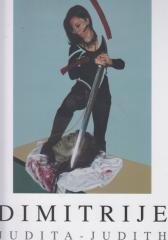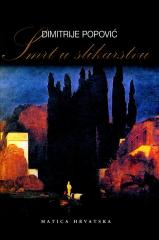Dimitrije Popović
Dimitrije Popović, painter, sculptor, graphic artist and writer (Cetinje, 1951). Graduated from the Academy of Fine Arts in Zagreb in 1976. With special drawing and painting skills, he records unusual figural compositions and characters. It shows a pronounced tendency to research and destruction of the human body, affect and to combine contradictions (erotic themes with Christology, surreal with classical ones). He created his work in cycles (Insects, 1972–74; Mythological motifs, 1977–78; Erotica, 1979–80; Corpus Mysticum, 1984–86; Marilyn Monroe, 1990; Hommage à Dalí, 2004). He is the author of a large number of graphic maps. Since the end of the 1980s, he has been engaged in sculpture, which he performs mainly in bronze. So far, he has organized about seventy solo exhibitions in the country and abroad and participated in more than three hundred group exhibitions. He is the winner of around thirty domestic and international awards for fine arts and literature. He published the books Veronica's Scarf (1996), Death in Painting (2001), Tales from Arcadia (2005), Corpus Mysticum (2007), The Crucifixion of the Passion (2008), Fornication and Holiness (2010), The Death of Danilo Rain (2011), Luča Njegoševe noci (Zagreb, 2012), Process of Kafka's Transfiguration (2013), Purple Mirror (2015), Eros, Blood and Sanctity (2017), Framed Words and Labyrinths of Memory (2018) , The Myth of a Woman (2020) and Art Records in the Age of Corona (2021). He is a member of the Montenegrin Academy of Sciences and Arts and the Dukljan Academy of Sciences and Arts, the Russian Academy of Literature, the Slavic Academy of Literature and Arts (Bulgaria), the Montenegrin PEN Center, the Society of Croatian Writers and the Croatian Society of Writers.
Titles in our offer
Blud i svetost: Eseji o Mariji Magdaleni
Dimitrije Popović in the book Fornication and Holiness talks about the fatal biblical woman Mary Magdalene who becomes a saint from a prostitute. It is this inner transformation of the intriguing female personality that represents the transformation from
Corpus Mysticum
"Impressive! Impressive!" - Pope John Paul II. in front of Dimitri's Crucifixion, 1994.
Dimitrije: Judita - Judith
"In the morphology of the female being, there are no more desirable characters than Judith and Salome, two women who carry two heads: their own and a severed one," writes the Spanish philosopher José Ortega y Gasset in his essay on Salome.
Smrt u slikarstvu
Veronikin rubac
What does it look like when one artist judges the works of other artists and when he investigates, as the art critic and poet Gordana Benić writes, "mysterious connections in art as a space where image and word come together"?




